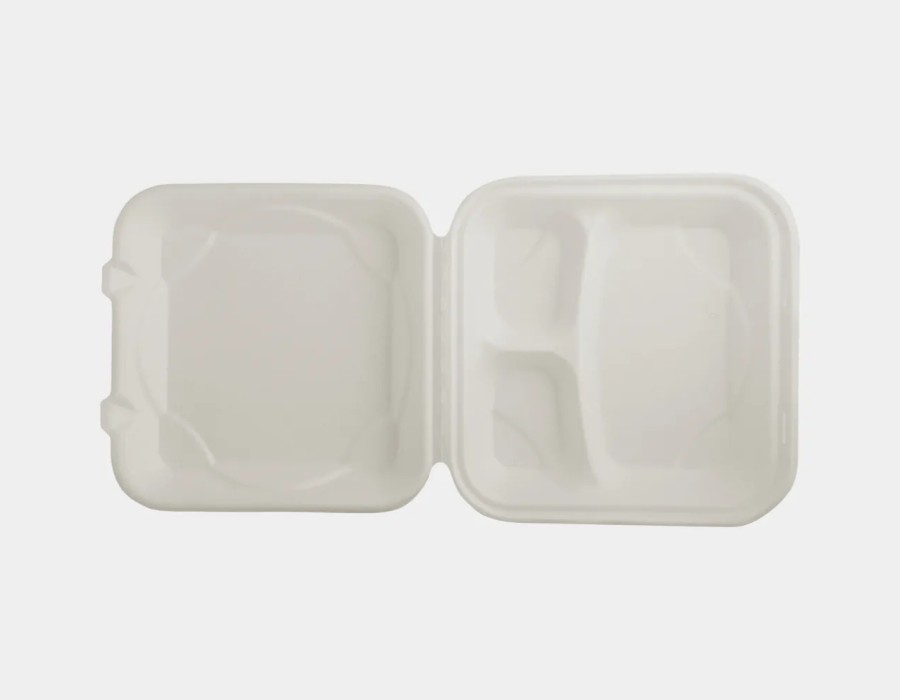With environmental awareness on the rise, the demand for biodegradable food container manufacturers has surged. However, the choice of materials can greatly impact the sustainability, functionality, and cost-effectiveness of these containers. Leading manufacturers are constantly exploring the best materials to balance eco-friendliness and product durability. In this blog, we’ll dive into some of the most popular biodegradable materials, how they’re selected by manufacturers and the benefits they bring to sustainable food packaging.
Understanding the Need for Biodegradable Materials in Food Packaging
Traditional plastic food containers are notorious for their environmental impact, taking hundreds of years to decompose. As businesses and consumers alike turn to more sustainable options, biodegradable materials have become a focal point. These materials break down naturally, reducing waste in landfills and oceans. Leading manufacturers emphasize materials that not only decompose quickly but also maintain the structural integrity required for food storage.
What Leading Manufacturers Consider When Choosing Materials
Choosing the right material goes beyond biodegradability; manufacturers take several critical factors into account to ensure products meet consumer needs and sustainability goals.
Decomposition Rate and Environmental Impact
Manufacturers prioritize materials that biodegrade quickly and leave minimal residue. Faster decomposition rates help ensure that the material doesn’t linger in the environment, and reduced residues prevent toxic build-up. Materials like bagasse and PLA are favored because they break down without creating harmful microplastics.
Strength and Durability for Food Safety
Not all biodegradable materials are created equal when it comes to durability. Leading manufacturers consider the intended use of the container to ensure it can handle both hot and cold foods without compromising structure. Materials like bamboo fiber and bagasse are chosen for their ability to withstand high temperatures, making them ideal for a variety of foods.
Production Sustainability
Sustainable sourcing is a key consideration. Materials derived from renewable sources like sugarcane, bamboo, and palm leaves are preferred because they have a lower carbon footprint during growth and harvesting. Manufacturers often partner with suppliers that follow sustainable farming practices to reduce environmental impact.
Consumer Appeal and Aesthetics
In today’s market, aesthetics and functionality matter. Many consumers prefer containers that look natural and feel sturdy. Materials like palm leaf and bamboo are not only biodegradable but also offer a distinctive, eco-friendly look that appeals to environmentally-conscious buyers.
Innovations in Material Development
Manufacturers are also investing in research and development to create hybrid materials that combine the best properties of different biodegradable options. By blending materials like PLA with natural fibers, manufacturers are developing containers that are more durable, heat-resistant, and suited for various food items. As these innovations advance, we can expect to see even more efficient and cost-effective options on the market.
Certifications and Quality Standards: Indicators of Responsible Manufacturing
To ensure the credibility of biodegradable claims, responsible manufacturers obtain certifications like BPI (Biodegradable Products Institute) and ASTM D6400, which verify Compostability and environmental impact. These certifications help businesses and consumers identify genuinely biodegradable products that align with eco-friendly standards.
Conclusion
The selection of materials for biodegradable food containers is crucial in today’s sustainable packaging industry. As we’ve explored, manufacturers consider multiple factors, from decomposition rates and strength to aesthetics and environmental impact, to provide effective solutions. With continued innovation and a commitment to eco-friendly practices, the future of biodegradable food containers promises even more options for sustainable dining. By understanding the materials and processes involved, businesses and consumers alike can make informed choices that support a cleaner planet.





Comments